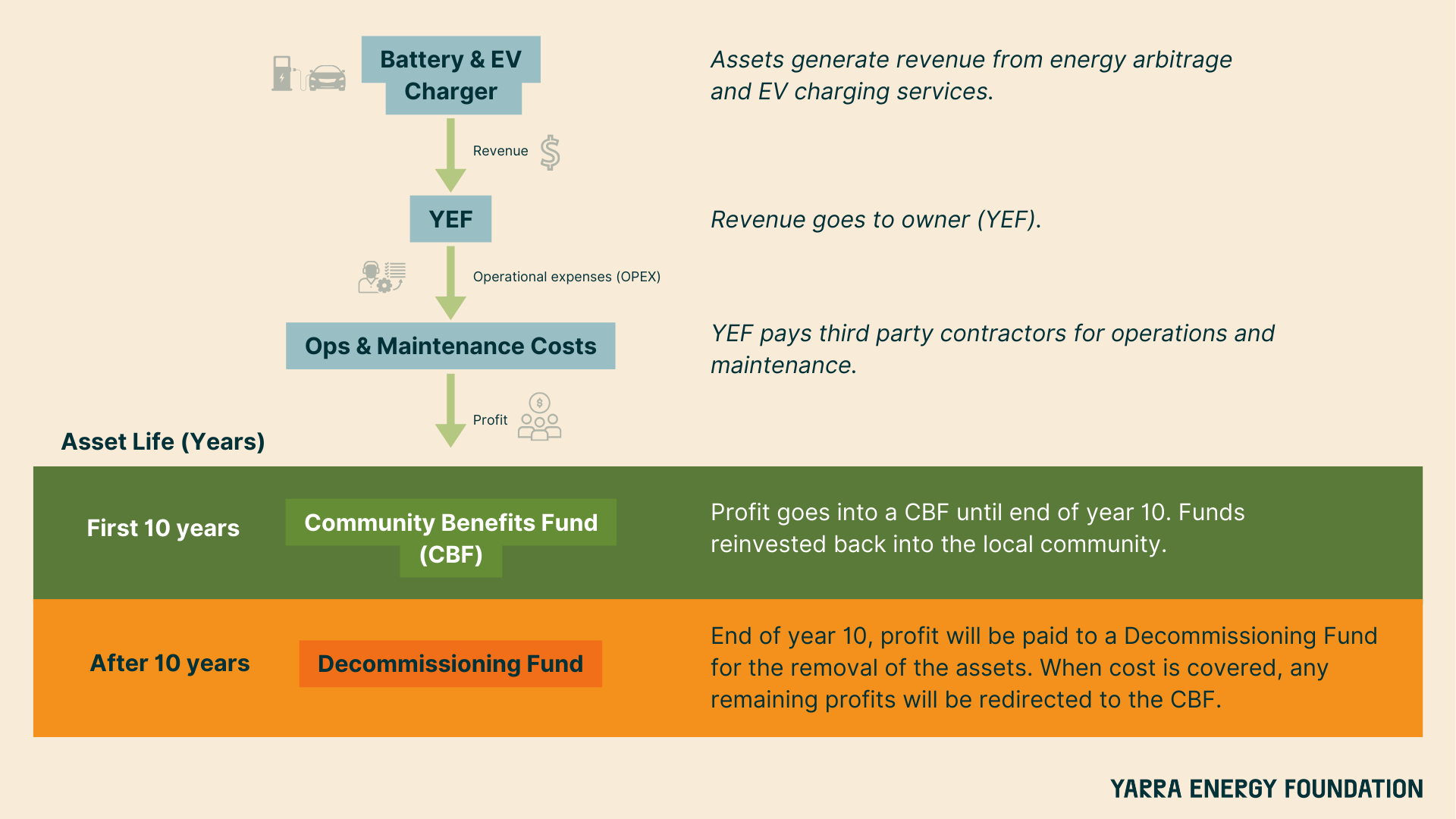The battery and EV charger will not directly affect your electricity bill, your retailer contract, or your solar feed-in-tariffs in any way. Most of the changes will happen ‘behind the scenes’ in the local electricity system. The battery will be connected to the grid, like any other property, and will not draw directly from any properties that may export solar energy. Exported energy from any property is likely to be imported and stored in the battery. The most significant impact is there will be more shared public EV charging available.
Any short-term impacts may occur from the construction of the battery and EV charging infrastructure. There may be some noise on the days of installation as workers come and go from the area over a period of a few weeks.
YEF will work closely with Council and relevant stakeholders to adhere to all construction requirements. Residents will be notified of any possible works or traffic disruptions, and YEF will seek to minimise negative impacts of these activities as much as possible.
During operations, your residence may be part of the same low-voltage network, which is a subnetwork or a “catchment” of the electricity grid, typically providing energy to usually between 100 to 300 houses. Properties on this network may have cleaner energy during their evening consumption on average, as the battery and EV charger will help to time shift both local and remotely generated renewable energy.
If your residence is not part of the same low-voltage network as the battery, then your property will not directly benefit. However, the battery will still have positive effects on the electricity grid as a whole, such as decarbonisation and the placing of downward pressure on energy prices in a small way.
The co-located EV charger is also intended for community use. A publicly available EV charger will support those unable to install a charger on their own property and make it easier for those transitioning to EVs.


